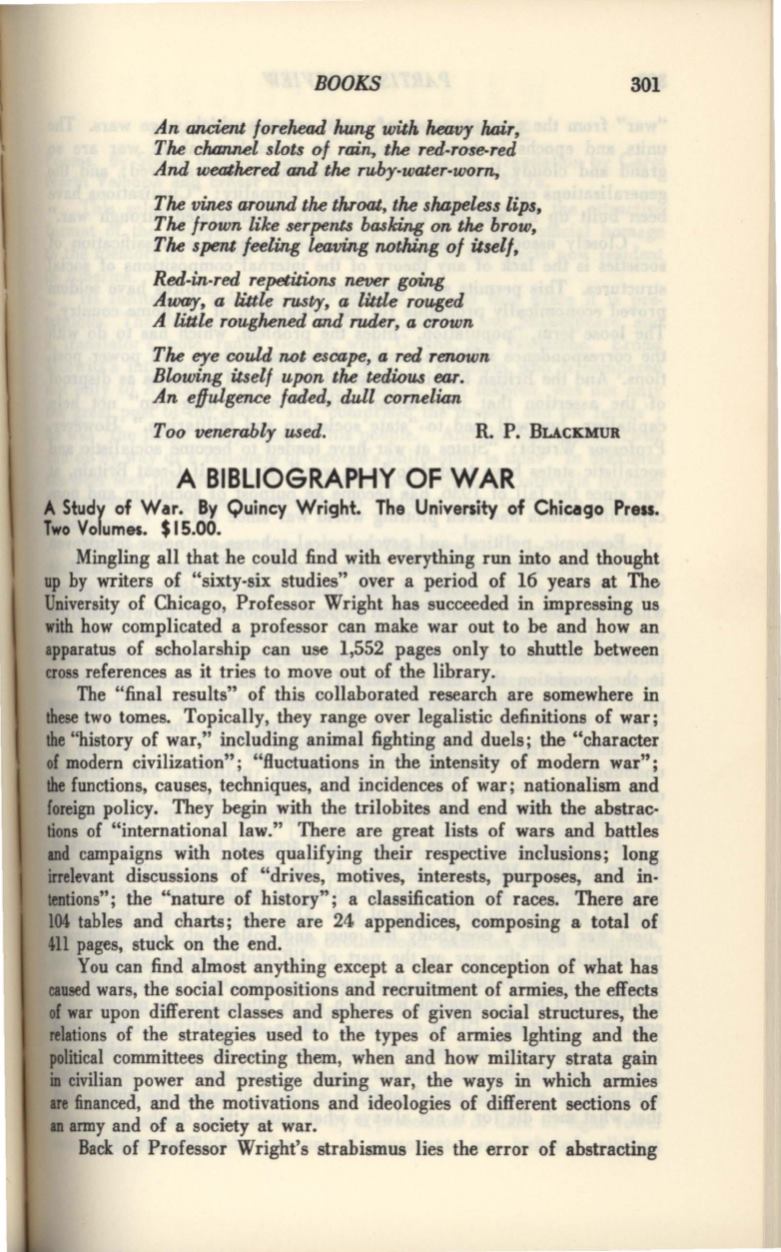
BOOKS
An
ancient
forehead hung with heavy hair,
The channel slots of rain, the red-rose-red
And weathered and the ruby-water-worn,
The vines around the throat, the shapeless lips,
The frown like serpents basking on the brow,
The spent feeling leaving nothing of itself,
Red-in-red repetitions never going
Away, a little rusty, a little rouged
A little roughened
and
ruder, a crown
The eye could not escape, a red renown
Blowing itself upon the tedious ear.
An effulgence faded, dull comelian
Too venerably used.
R. P.
BLACKMUR
A BIBLIOGRAPHY OF WAR
301
AStudy
of War.
By
Quincy Wright. The University of Chicago Press.
Two Volumes. $15.00.
Mingling all that he could find with everything run into and thought
up by writers of "sixty-six studies" over a period of 16 years at The
University of Chicago, Professor Wright has succeeded in impressing us
with
how complicated a professor can make war out to
be
and how an
apparatus of scholarship can use 1,552 pages only to shuttle between
cross references as it tries to move out of the library.
The "final results" of this collaborated research are somewhere in
these
two tomes. Topically, they range over legalistic definitions of war;
the "history of war," including animal fighting and duels; the "character
of modern civilization"; "fluctuations in the intensity of modern war";
the
functions, causes, techniques, and incidences of war; nationalism and
foreign policy. They begin with the trilobites and end with the abstrac–
tions of "international law." There are great lists of wars and battles
and
campaigns with notes qualifying their respective inclusions; long
irrelevant discussions of "drives, motives, interests, purposes, and in–
tentions"; the "nature of history"; a classification of races. There are
1M tables and charts; there are 24 appendices, composing a total of
411
pages, stuck on the end.
You can find almost anything except a clear conception of what has
caused wars, the social compositions and recruitment of armies, the effects
of
war upon different classes and spheres of given social structures, the
relations of the strategies used to the types of armies lghting and the
political committees directing them, when and how military strata gain
ill
civilian power and prestige during war, the ways in which armies
are financed, and the motivations and ideologies of different sections of
111
army and of a society at war.
Back of Professor Wright's strabismus lies the error of abstracting


